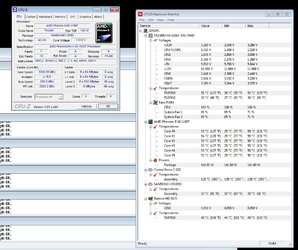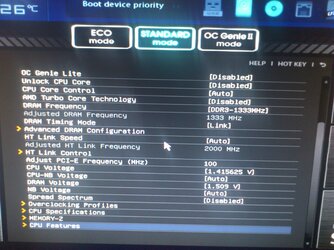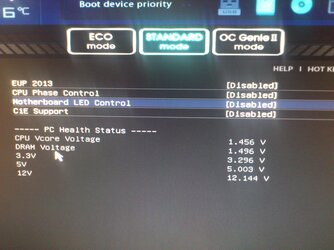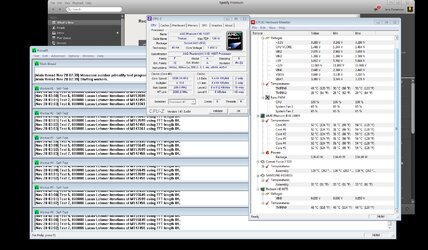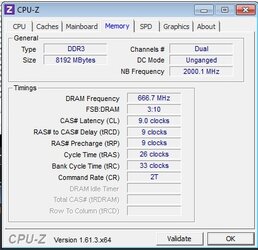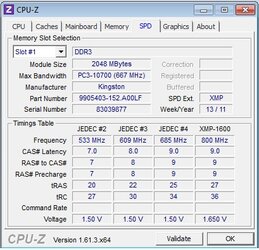crazyponytail
New Member
- Joined
- Nov 16, 2012
Hello guys!
I hope you can help me OC my 1100T. I will want to try to get the best out of it. I will upload videos for everything I do. I know basics of overclocking, I have read guides. But it never works for me, maybe its that im doing something wrong or the chip just wont take it. WE WILL SEE.
I just need your help to verify if its me or the chip that is faulty . Otherwise I will just change the mobo and the cpu and get an intel i5 or something. In other words I want to upgrade my set, but I cant have this cpu at stock if I will do so.
So lets try to OC this to the top and I will be so grateful for all the potential help I can get.
Here is my first video:
SPEC:
msi fxa 990 gd65
amd 1100t be with Antec Khuler 920 liquid cooling.
kingston hyperx 2gb (8gb total)
650w PSU
xfx HD6870 be
So first stuff. Should I run memory at 1600 or 1333. Are we going FSB clock or just multiplier. Guessing I should disable turbo clock as well.
I hope you can help me OC my 1100T. I will want to try to get the best out of it. I will upload videos for everything I do. I know basics of overclocking, I have read guides. But it never works for me, maybe its that im doing something wrong or the chip just wont take it. WE WILL SEE.
I just need your help to verify if its me or the chip that is faulty . Otherwise I will just change the mobo and the cpu and get an intel i5 or something. In other words I want to upgrade my set, but I cant have this cpu at stock if I will do so.
So lets try to OC this to the top and I will be so grateful for all the potential help I can get.
Here is my first video:
SPEC:
msi fxa 990 gd65
amd 1100t be with Antec Khuler 920 liquid cooling.
kingston hyperx 2gb (8gb total)
650w PSU
xfx HD6870 be
So first stuff. Should I run memory at 1600 or 1333. Are we going FSB clock or just multiplier. Guessing I should disable turbo clock as well.
